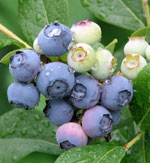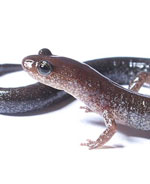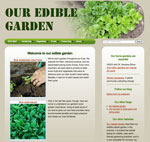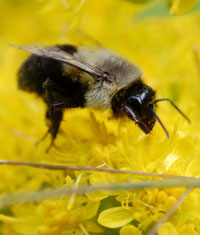| Organic chocolate and birds of Hispaniola | |
|
An Onondaga Audubon program Wednesday, April 9, 7 p.m. Onondaga Lake Visitors Center Adjacent to I-690 on the southwest shore of Onondaga Lake As a graduate student at SUNY-ESF, Andrea Thomen has been studying the importance of agroforestry for bird species in the Caribbean. In this program, she will explain how birds can help promote sustainable livelihoods in the tropics. For directions visit
|
| Birds of Onondaga Lake Through the Eyes of Local Photographers | |
|
Meet CNY photographers and have an opportunity to learn from habitat experts from Onondaga Lake Conservation Corps. Sat., Mar. 29 9am-4pm Sun., Mar. 30 1-4pm The Onondaga Lake Visitors Center ( Directions)
|
| Learn to grow your own food | |
| Our land can grow food not only for creatures, but for ourselves.
John Allen of Edible Gardening CNY will present a number of programs this spring about how you can grow your own food.
For dates and times, visit Edible Gardening CNY at www.egcny.org.
|
To Eat and
NOT to Eat |  | |
The Men's Garden Club of Syracuse 19th Spring Gardening Seminar
Featuring:
Charlie Nardozzi
"Edible Landscaping"
Ellen Zachos:
"Gardening in Deer Country"
Sat., April 12 9 am - Noon
(Registration 8:15am)
Justin's Tuscan Grill in E. Syracuse, off Carrier Circle
$45 preregistered for non-members
$40 members
$50 at the door
For more info:
call 315-238-8256
or email
|
Amphibian Alert!
Baltimore Woods Nature Center
|
 | |
Photo CC: Brian Gratwicke
|
|
Each spring during the first warm rainy night after the equinox, hundreds of amphibians creep from underground lairs to vernal pools. Find out when Baltimore Woods will attempt to observe this migration at Labrador Hollow. Watch for alerts on the http://baltimorewoods.org/ website or call 673-1350 to be put on the alert list. $5 for members; $15/family; $8 for nonmembers, $25/family
|
Delight of the Bumblebee
Sat. Mar. 29
Baltimore Woods
|  | |
Bumblebees will be waking up soon, taking advantage of the first flowers of spring.
Come learn about these fascinating fuzzy insects as they amble through the spring forest, and see how you can help these important pollinators through citizen science opportunities and building simple nest boxes.
$5 for members, $15/family; $8 for nonmembers,
$25 /family.
More info at
www.baltimorewoods.org
|
HGCNY Officers
| |
| President:
Janet Allen
Vice-President:
Carol Biesemeyer
Treasurer:
Randi Starmer
Secretary:
Soule Leiter
Membership:
Linda Rossiter
Program Chair:
Carol Biesemeyer
Newsletter Editor:
Janet Allen
Additional Planning Committee Members:
Beth Mitchell
Dave Mitchell
John Allen
|
| Our Habitat Garden |  |
Visit Our Habitat Garden website for information on providing habitat, earth-friendly gardening practices, plants, and various creatures here in Central New York. TIP: Click on each sliding menu item as you navigate through the menus to pin them down instead of sliding away.
|
| HGCNY on Facebook |
As as more of us participate on our Facebook page, this will become a useful resource for asking (and answering!) local HGCNYers' questions about habitat gardening. |
|
Join HGCNY!
|  |
Becoming an official member of HGCNY is easy: just join Wild Ones! Basic household membership is $37/year, but there are other options, too. (See membership application or website.)
Wild Ones
P.O. Box 1274
Appleton, Wisconsin 54912-1274
Make checks payable to Wild Ones.
Or telephone toll-free 877-394-9453.
|
|
Our Edible Garden
|  | Visit OurEdibleGarden.org to see an example of a Central New York edible garden, the perfect companion to your habitat garden.
|
|
 | Black cohosh
(Cimicifuga racemosa)
|
It may be hard to imagine right now, but our beautiful perennial plants really ARE under all that snow, getting ready to emerge.
And our March meeting will help you create even more of these beautiful and valuable plants.
We're welcoming back Ellen Folts, owner of Amanda's Garden, who will present Encouraging Nature: Propagating, Growing and Using Native Perennials.
Native perennials meet the needs of native pollinators and fill a vital role in the garden. Locally grown native perennials produced by seed are adapted to the area in which they are produced, and propagating these plants is relatively easy once their germination requirements are met. She will discuss seed propagation techniques, along with garden uses of various native woodland plants that can be propagated in this manner.
WHEN: Sunday March 30 at 2:00 pm WHERE: Liverpool Library (Directions)
We meet the last Sunday of the month, and our meetings are free and open to the public. Come and bring a friend!
Upcoming presentations  I'll be doing some presentations - free and open to the public.
Wed. March 26 at 7:30 pm: Gardening for Nature, the free monthly Sierra Club program held at University UMC at 1085 E. Genesee St, Syracuse. (Enter on the University Ave. side entrance.)
Sat. April 5 at 10 am:
Habitat Gardening for Life
Northern Onondaga Library at Cicero
8686 Knowledge Ln. Cicero.
Janet Allen
President, HGCNY |
|
 |
Woodland sunflower
(Helianthus divaricatus)
|
Sunflowers: Annuals and Perennials
Some sunflowers are annuals and some are perennials.
Annual plants complete their life cycle in one year, then die; perennials live more than two years.
In the last newsletter, we discussed the annual sunflower Helianthus annuus. Annual sunflowers with their large central flowerhead (actually consisting of many tiny flowers) are what most people think of as a sunflower.
Perennial sunflowers
 | Jerusalem artichoke
(H. tuberosus)
|
Perennial sunflowers are in the same Helianthus genus and have the same sunny color, but quite a different look. They have many more, but smaller, flowers and, of course, come up each year -- sometimes in a wider area than before. Here are two common perennial sunflower species. The woodland sunflower ( H. divaricatus) grows in sun, but also in light shade, in moist to moderately dry soil. At 2 to 6 feet, it's fairly tall, though not as tall as its annual counterpart. And the flowers are not nearly as large (see photo above), but a lot more numerous. Bees love them as much as they do the annual variety. They bring a lot of cheery color, but they do want to form colonies, so they should be planted in an area that allows for that. Another perennial sunflower can be found in the grocery store: Jerusalem artichoke. Despite its name it is neither native to the Middle East nor an artichoke. Its scientific name ( H. tuberosus) is a much better guide to the plant: it's a sunflower ( Helianthus) and it forms tubers underground ( tuberosus). It, too, is tall (4-6 feet or more) and has a lot of small yellow flowers that pollinators love. The bonus is that you can eat the tubers! And don't worry, you're unlikely to dig up all of them -- which is another way of saying be careful where you plant them. |
|
GMOs and the monarch butterfly
 | Not-so-common common milkweed (Asclepias syriaca)
|
Roundup-ready corn and soybeans contain a gene allowing the plants to withstand Roundup, or glyphosate. That allows farmers to spray their fields with Roundup without harming the crops.
An unintended consequence of this practice is a dramatic decline in the amount of milkweed available for monarch butterflies.
As Chip Taylor, director of Monarch Watch at the University of Kansas says, "What we're seeing here in the United States is a very precipitous decline of monarchs that's coincident with the adoption of Roundup-ready corn and soybeans. The first ones were introduced in 1997, soybeans first, then corn. By 2003, 2004, the adoption rate was approaching 50 percent, and then we really began to see a decline in monarchs. And the reason is that the most productive habitat for monarch butterflies in the Midwest, in the Corn Belt, was the corn and soybean fields [where milkweed, which monarchs feed on, grew]."
Read more of this interview with Chip Taylor about GMO crops and other issues affecting the future of the monarch butterfly and its migration at Yale Environment 360. |
|
Phragmites

Most of us are aware of the scourge of common reed grass phragmites (P. australis ssp. australis), a non-native invasive plant found in wetlands.
But did you know there is a native North American phragmites (P. a. ssp. americanus)? It's less vigorous than the European type.
Native Phragmites has been an important part of healthy Great Lakes coastal wetlands for thousands of years.
Which is which?
So when you encounter phragmites, how can you distinguish between the two subspecies? The Great Lakes Phragmites Collaborative has a handy guide at http://greatlakesphragmites.net/native-vs-invasive/ that contrasts stem color, leaf color, and other characteristics of the two plants. The website also has links to more information. Other look-alikesOther invasive plants have native look-alikes. Make sure you know which is which so natives aren't accidentally destroyed. An excellent guide to these look-alikes is Mistaken Identity: Invasive Plants and their Native Look-Alikes, an Identification Guide for the Mid-Atlantic available at |
|
|
|
|